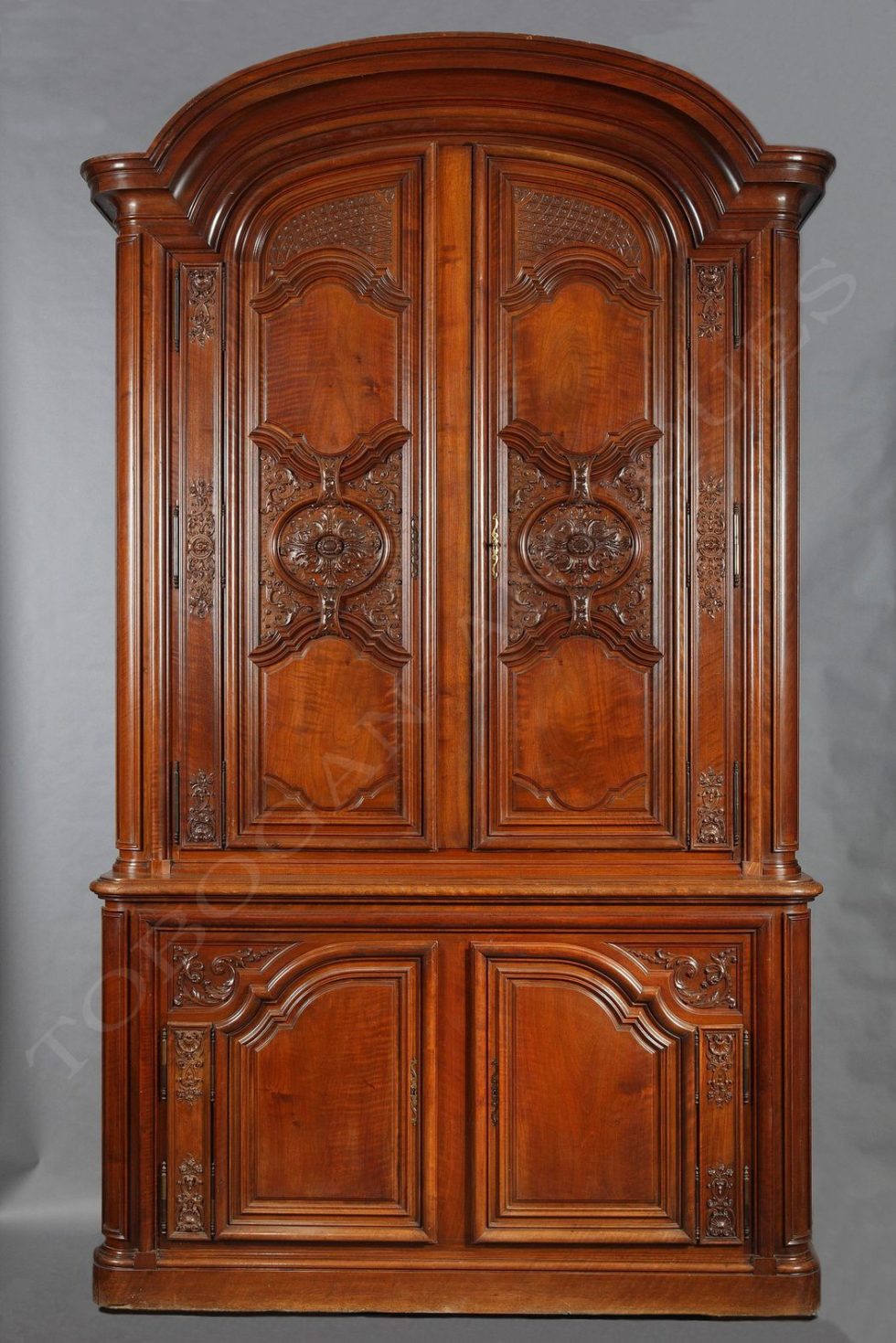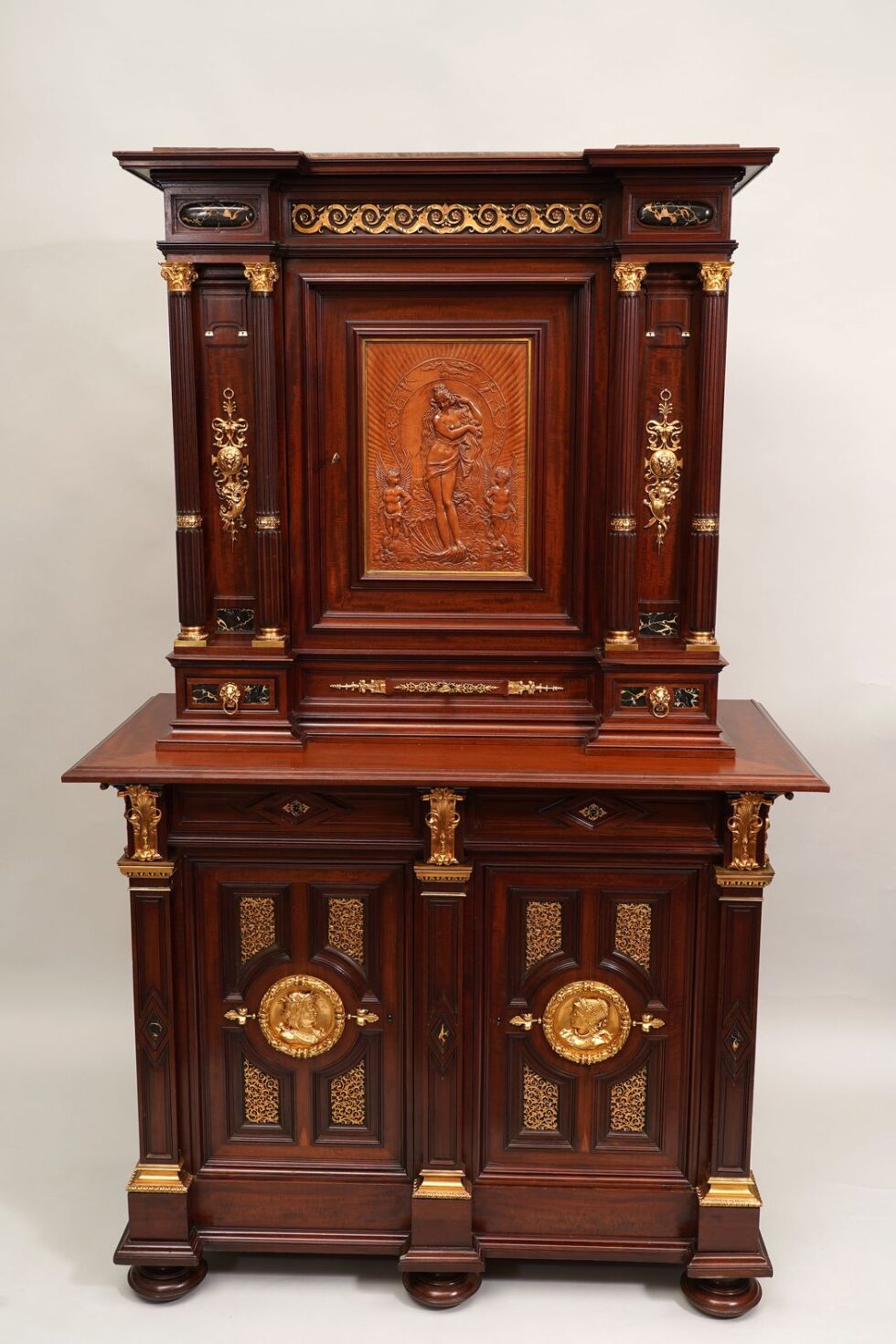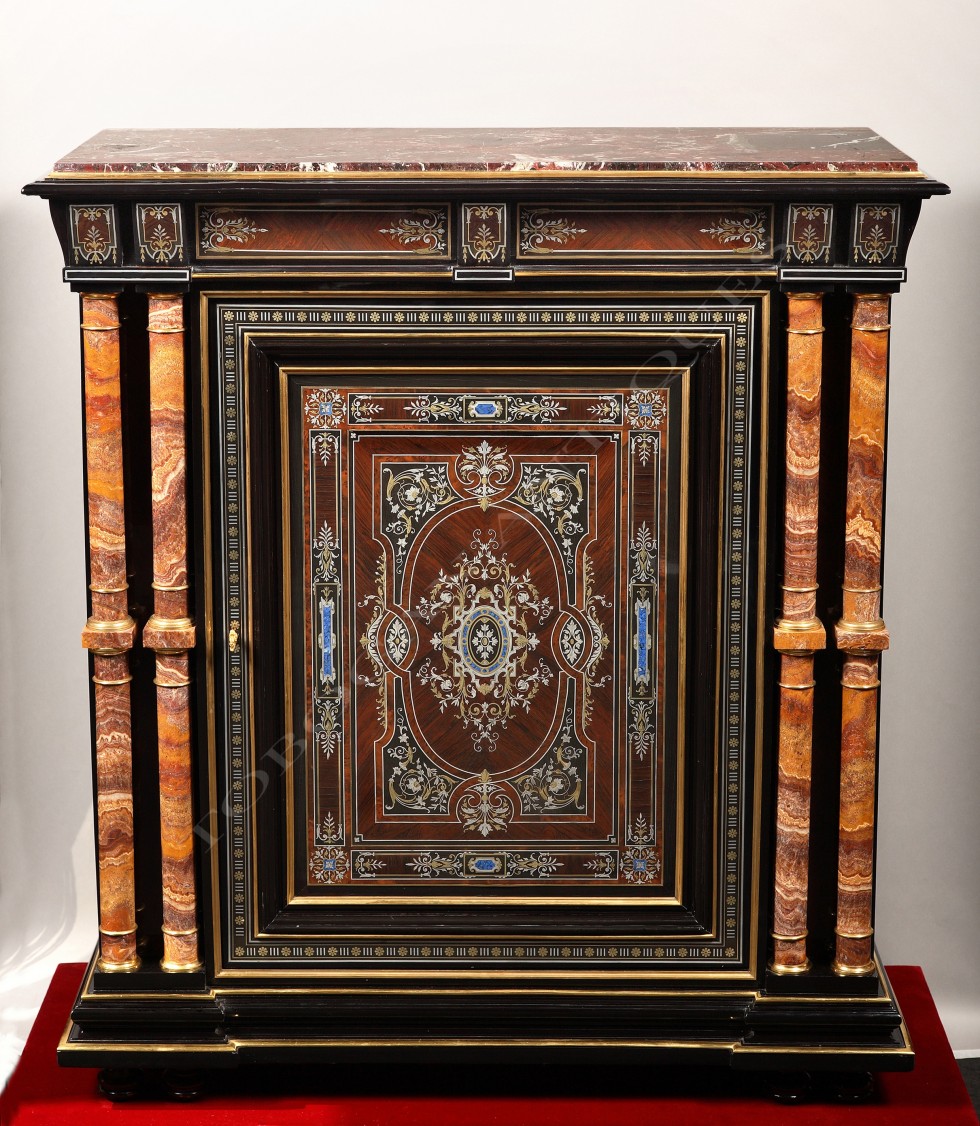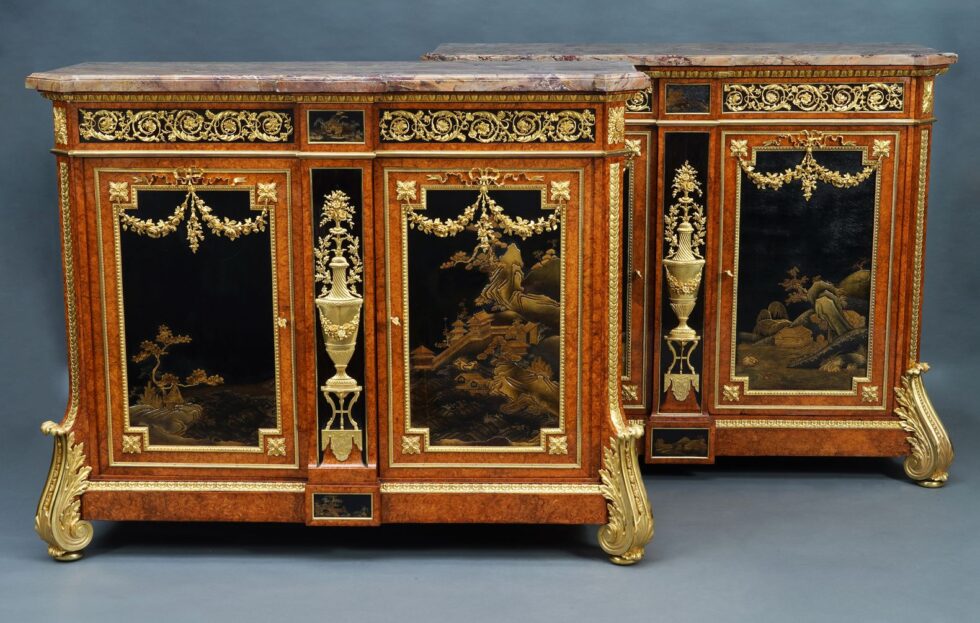ref 454
H.-A. Fourdinois
Cabinet-maker
(1830-1907)
(attributed to)
V. Paillard
Bronze-caster
(1805-1886)
A Rare Display Sideboard
France
Circa 1865
Walnut, Ebony, Malachite, Patinated bronze
Height : 265 cm (104,3 in.) ; Width : 240 cm (94,5 in.) ; Depth : 55 cm (21,6 in.)
A finely sculpted two-part walnut sideboard with leaves motifs, with uncoupled pillars and Sciences and Arts attributes in medallions, the set colored by a malachite inlay and framed with black wooden moldings.
The upper part opens with four glazed doors, as well as four plain doors in the lower part and eight drawers on the belt.
On the top of the cabinet’s cornice stands a patinated bronze figure of Lorenzo de Medici, signed V.P, after the statue of Lorenzo de Medici, sculpted in the 16th century by Michelangelo (placed on his cenotaph in the new sacristy of San Lorenzo church in Florence).
Biography
Victor Paillard (1805-1886) was one of the most distinguished bronze casters in Paris during the second half of the 19th Century. He was taught chasing by Jean-François Denière (1774-1866), then opened in the 1830’s his own workshop making “Art bronzes and Furnishing bronzes”, settled n°105, boulevard Beaumarchais in Paris. He executed first small objects, then cast statuettes, candelabra, clocks as well as impressive sized torcheres. He appeared to the public for the first time at the Industrial Products Exhibition of 1839 and worked for the greatest French sculptors, such as Pradier, Barye and Carrier-Belleuse. He exhibited extensively with great success being mentioned for the quality of his work at the famous 1851 and 1862 London Universal Exhibitions, and the 1855, 1867 and 1878 Universal Exhibitions then held in Paris. Paillard was there celebrated by everyone ; John Burney Waring ilustrates a gilt-bronze mirror by him in his “Masterpieces of Industrial Art and Sculpture, 1862 (Plate 92)”, which is a comprehensive record of the finest pieces on show in the London Exhibition. At that time, he was awarded a prize medal and the exceptional quality of his work was commented in all jury reports. Appointed a Chevalier of the Légion d’honneur by the French Government, Paillard employed since the 1850’s a hundred workers and proposed to his wealthy clients about four hundreds models, cast in bronze not only after famous sculptors’ works, but also after his own creations. It is especially interesting that his “Cherub” figures, such as those ones presented here were particularly singled out for their charm and popularity by commentators at both the 1862 and 1867 Universal Exhibitions. Burney Waring noted that they portrayed the “happy and innocent moods of childhood”.
The Fourdinois company was founded in 1835 by Alexandre-Georges Fourdinois (1799-1871). The Universal Exhibition held in London in 1851 was undoubtedly their first great artistic and public success. Winning the Great medal for a neo-Renaissance buffet triggered a competition among other cabinetmakers, as the press was unanimously greeting their success. His son Henri-Auguste (1830-1907) was taught design by the architect Duban, then by the silversmith Morel in London, before working with the bronze founder Paillard. He joined the firm in 1860. His talent and the high quality of his designs drew attention at the 1862 World Exhibition in London, where the jury awarded him two medals for « Excellence in Composition and Execution ». Henri-Auguste, now sole in charge, brought the firm to the summit of its achievements at the 1867 Universal Exhibition in Paris by winning the Grand Prix (classes 14 and 15) as well as at the 1878 Exhibition. The 1862-1880 period marks truly the peak for the Fourdinois house, which remains for many cabinet-makers, whether French, English or American, an example to follow.
Bibliography
Archives de la Documentation, Musée d’Orsay, Paris
19th Century European Furniture, Christopher Payne, p° 37
Les ébénistes du XIXe siècle, D. Ledoux-Lebard, Ed. de l’amateur, 1984, p° 208
Le mobilier Français, Napoléon III, années 1880, par Odile Nouvel-Kammerer, Ed. Massin, 1996, p° 39
Contact us
Tobogan Newsletter
If you want to be up-to-date with our new acquirings you can sign up to our newsletter.











